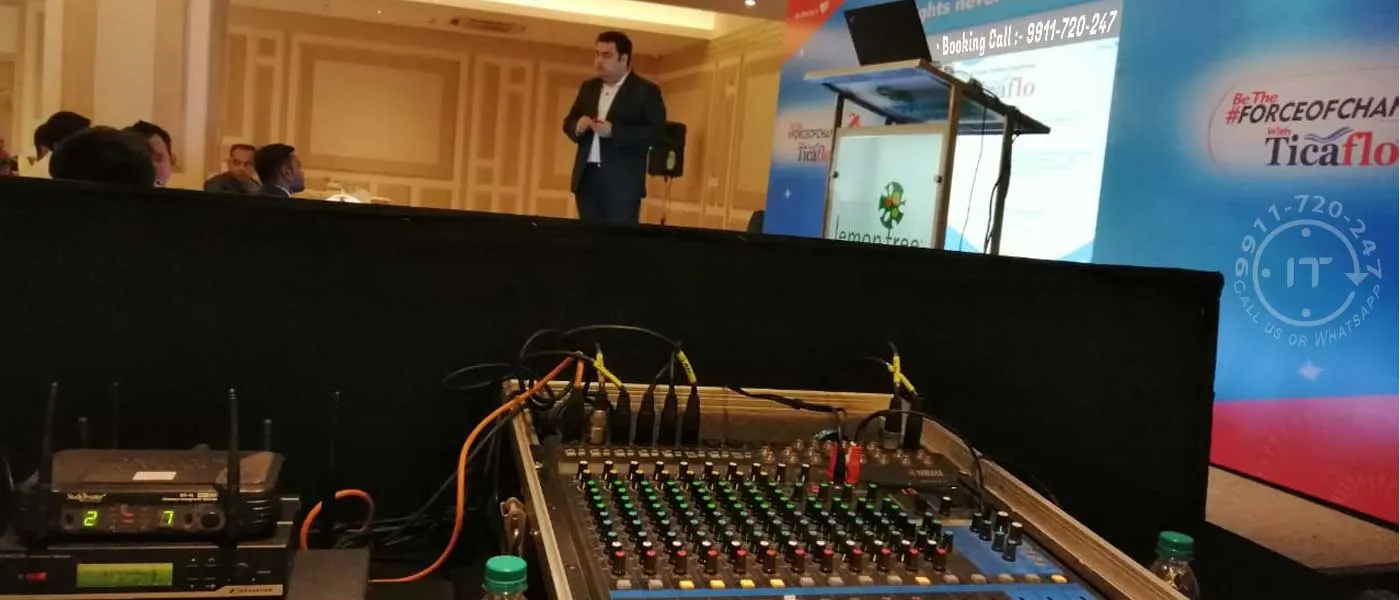
SPARES
Projector & AV equipment
The video projector, or just projector for short, is a piece of equipment that video-streams images from its source to a screen. It works in the same way as an overhead projector. A typical modern video projector consists of four main components: the projection lens system, the lamphouse and bulb, the color wheel or technologies such as LCD panels that produce red/green/blue light when stimulated by high-intensity light sources (such as blue LEDs), and the cooling system.
Projection Lens System
The first component is the projection lens system. This structure consists of a series of lens elements connected in the proper sequence to form an optical system, focusing light from the lamp into a small image on the screen (the “lens”). The lens system may be located inside or outside the lamphouse. It is usually mounted onto an adjustable base or lens-shimming mechanism for adjusting focus and tracking magnification and keystone correction.
Lamphouse And Bulb
The second component is the lamphouse, which houses the lamp. Electrical controls adjust the lamp’s output to ensure a specified level of brightness and color fidelity. The bulb is the light source that emits high-intensity light (usually blue light) from one or two lamps, or, in modern systems, multi-element lamps also generate yellow and red lights.
Color Wheel & Other Technologies
The third component is the color wheel. This is a disc with red, blue, and green segments that rotate in front of the light beam (a process called “interference”), producing different light colors. The rotation speed can be adjusted so the projector can simulate changing conditions of daylight, including outdoor and indoor settings. The LCD panels use a series of liquid crystal cells to accomplish similar results.
Cooling System
The final component is the cooling system. This unit contains a compressor, condenser fan(s), and refrigeration unit (either a coil or evaporator) that cools down the liquid crystal panel, lamphouse, and bulb to maintain their desired operating temperatures.
Focus and Keystone
The video projector can also be equipped with a focusing mechanism and keystone correction. The focus mechanism adjusts the lens to produce a sharp image, whereas the keystone correction corrects for anamorphic distortion at the screen corners. This is achieved by physically moving parts of the optical system (most commonly a set of prisms) during operation.
Tracking
Tracking is another vital part of a projector that works according to a procedure to compensate for slight movement caused by the image on an uneven screen. This is achieved by the addition of parts (usually gears or rollers) inside the optical system.



John Doe says:
Lorem ipsum dolor sit amet, consectetur adipiscing elit, sed do eiusmod tempor incididunt ut labore et dolore magna et sed aliqua. Ut enim ea commodo consequat...
ReplayJohn Doe says:
Lorem ipsum dolor sit amet, consectetur adipiscing elit, sed do eiusmod tempor incididunt ut labore et dolore magna et sed aliqua. Ut enim ea commodo consequat...
ReplayJohn Doe says:
Lorem ipsum dolor sit amet, consectetur adipiscing elit, sed do eiusmod tempor incididunt ut labore et dolore magna et sed aliqua. Ut enim ea commodo consequat...
ReplayJohn Doe says:
Lorem ipsum dolor sit amet, consectetur adipiscing elit, sed do eiusmod tempor incididunt ut labore et dolore magna et sed aliqua. Ut enim ea commodo consequat...
ReplayJohn Doe says:
Lorem ipsum dolor sit amet, consectetur adipiscing elit, sed do eiusmod tempor incididunt ut labore et dolore magna et sed aliqua. Ut enim ea commodo consequat...
Replay